#29 November 1803
Explore tagged Tumblr posts
Text




















Dessalines & Christophe declared St Domingue (Haiti) independent on November 29, 1803.
#St Domingue#Haiti#independent#Hispaniola#Haitian history#29 November 1803#anniversary#Caribbean Sea#Caribbean Island#beach#forest#nature#Labadee#water#waves#landscape#beach life#Dragon's Head#summer 2013#travel#original photography#vacation#tourist attraction#landmark#seascape#countryside
18 notes
·
View notes
Photo
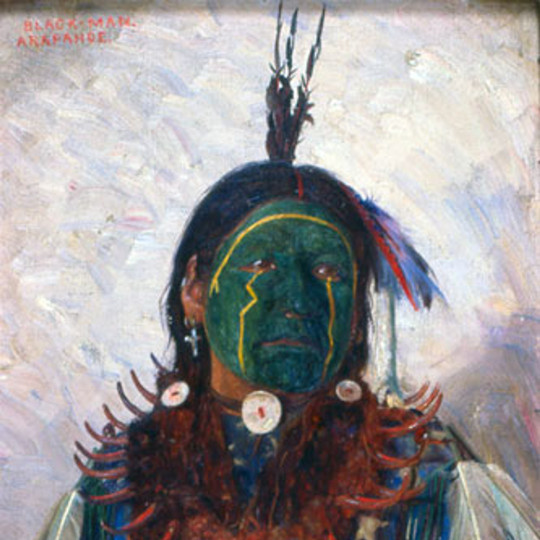
Arapaho
The Arapaho are a North American Native nation originally from the Red River Valley in modern-day Manitoba, Canada, and Minnesota, USA. They migrated south in the early 18th century and established themselves in modern-day Colorado, Montana, Nebraska, Wyoming, and points south. They are associated with the Plains Indians culture and have long been allies of the Cheyenne.
The Arapaho adopted an agrarian lifestyle early, which was then modified when they were introduced to the horse by French traders. Able to travel further on hunts now, they gradually became a nomadic people and, pressured by the Ojibwe expansion in the Great Lakes region, moved south. Scholar Adele Nozedar writes:
When the settlers first came upon them, the Arapaho were already expert horsemen and buffalo hunters. Their territory was originally what has become northern Minnesota, but the Arapaho relocated to the eastern Plains areas of Colorado and Wyoming at about the same time as the Cheyenne; because of this, the two people became associated and are also federally recognized as the Cheyenne and Arapaho Tribes.
(25)
The Arapaho speak the Arapaho language (part of the Algonquian language group) and continue to practice their traditional, animistic, religion today as they did in the past, although many now blend the ancient spiritual beliefs with Christian rites and rituals. They were among the Plains Indians who participated in the Sun Dance (which they referred to as the Offerings Lodge) in the 19th century and still observe the ritual today at the Northern Arapaho Reservation of Wind River in Wyoming.
Like other nations of the Great Plains, and elsewhere, the Arapaho clashed with the Euro-American settlers migrating west in the mid-19th century. Allied with the Cheyenne and Sioux, Arapaho warriors took part in the Colorado War (1864-1865), Red Cloud's War (1866-1868), and the Great Sioux War (1876-1877), among other conflicts. The Southern Arapaho were camped with the Southern Cheyenne under Chief Black Kettle (l. c. 1803-1868) when they were attacked by US cavalry in what is now known as the Sand Creek Massacre (29 November 1864), which only strengthened their resolve to defend their ancestral lands against invasion by White settlers from the United States.
Even so, by 1868, both the Northern and Southern Arapaho understood the futility of continuing the fight against overwhelming forces and agreed to move onto reservations (which is one of the reasons so few Arapaho were present at the Battle of the Little Bighorn in 1876). The Southern Arapaho were relocated to Indian Territory (modern-day Oklahoma) while the Northern Arapaho were moved to the reservation of the Shoshone, their traditional enemies, in Wyoming.
Like the Pawnee, the Arapaho were allowed to continue to observe the Ghost Dance, initiated by the Paiute Nation in 1889, after the US government prohibited other nations, notably the Sioux, from doing the same. The songs and rituals that accompany the Ghost Dance enabled the Arapaho to retain much of their culture, and both Northern and Southern Arapaho continue these traditions today.
Name & Nation
The name Arapaho was given to the people by European colonists who mispronounced the name given them by the Crow nation – Alappaho ("Many Tattoos"), which the people then began to apply to themselves. They originally called themselves Hinono'eino ("the people" or "our people"). The Cheyenne referred to them as Hitanwo'iv ("People of the Sky"), but the reason for this is unclear.
In the 18th century, the Arapaho nation consisted of five bands, each with their own dialect of the Algonquin Arapaho language:
Beesowuunenno (Big Lodge People)
Hanahawuuena (Rock People)
Hinanae'inan (Arapaho Proper)
Nawathi'neha (Southern People)
Haa'ninin (White Clay People - better known as Atsina and Gros Ventre)
The Gros Ventre split from the other bands in the early 18th century and were later regarded as inferior by the Arapaho. The Arapaho nation was then defined by the four remaining tribal bands, who separated into the Northern Arapaho and Southern Arapaho with the northern band holding the position of the "mother tribe" responsible for the safekeeping of sacred objects such as the ceremonial flat pipe.
Southern Arapaho Woman's Leggings and Moccasins
Uyvsdi (Public Domain)
Continue reading...
40 notes
·
View notes
Text
The napoleonic marshal‘s children
After seeing @josefavomjaaga’s and @northernmariette’s marshal calendar, I wanted to do a similar thing for all the marshal’s children! So I did! I hope you like it. c: I listed them in more or less chronological order but categorised them in years (especially because we don‘t know all their birthdays). At the end of this post you are going to find remarks about some of the marshals because not every child is listed! ^^“ To the question about the sources: I mostly googled it and searched their dates in Wikipedia, ahaha. Nevertheless, I also found this website. However, I would be careful with it. We are talking about history and different sources can have different dates. I am always open for corrections. Just correct me in the comments if you find or know a trustful source which would show that one or some of the dates are incorrect. At the end of the day it is harmless fun and research. :) Pre 1790
François Étienne Kellermann (4 August 1770- 2 June 1835)
Marguerite Cécile Kellermann (15 March 1773 - 12 August 1850)
Ernestine Grouchy (1787–1866)
Mélanie Marie Josèphe de Pérignon (1788 - 1858)
Alphonse Grouchy (1789–1864)
Jean-Baptiste Sophie Pierre de Pérignon (1789- 14 January 1807)
Marie Françoise Germaine de Pérignon (1789 - 15 May 1844)
Angélique Catherine Jourdan (1789 or 1791 - 7 March 1879)
1790 - 1791
Marie-Louise Oudinot (1790–1832)
Marie-Anne Masséna (8 July 1790 - 1794)
Charles Oudinot (1791 - 1863)
Aimee-Clementine Grouchy (1791–1826)
Anne-Francoise Moncey (1791–1842)
1792 - 1793
Bon-Louis Moncey (1792–1817)
Victorine Perrin (1792–1822)
Anne-Charlotte Macdonald (1792–1870)
François Henri de Pérignon (23 February 1793 - 19 October 1841)
Jacques Prosper Masséna (25 June 1793 - 13 May 1821)
1794 - 1795
Victoire Thècle Masséna (28 September 1794 - 18 March 1857)
Adele-Elisabeth Macdonald (1794–1822)
Marguerite-Félécité Desprez (1795-1854); adopted by Sérurier
Nicolette Oudinot (1795–1865)
Charles Perrin (1795–15 March 1827)
1796 - 1997
Emilie Oudinot (1796–1805)
Victor Grouchy (1796–1864)
Napoleon-Victor Perrin (24 October 1796 - 2 December 1853)
Jeanne Madeleine Delphine Jourdan (1797-1839)
1799
François Victor Masséna (2 April 1799 - 16 April 1863)
Joseph François Oscar Bernadotte (4 July 1799 – 8 July 1859)
Auguste Oudinot (1799–1835)
Caroline de Pérignon (1799-1819)
Eugene Perrin (1799–1852)
1800
Nina Jourdan (1800-1833)
Caroline Mortier de Trevise (1800–1842)
1801
Achille Charles Louis Napoléon Murat (21 January 1801 - 15 April 1847)
Louis Napoléon Lannes (30 July 1801 – 19 July 1874)
Elise Oudinot (1801–1882)
1802
Marie Letizia Joséphine Annonciade Murat (26 April 1802 - 12 March 1859)
Alfred-Jean Lannes (11 July 1802 – 20 June 1861)
Napoléon Bessière (2 August 1802 - 21 July 1856)
Paul Davout (1802–1803)
Napoléon Soult (1802–1857)
1803
Marie-Agnès Irma de Pérignon (5 April 1803 - 16 December 1849)
Joseph Napoléon Ney (8 May 1803 – 25 July 1857)
Lucien Charles Joseph Napoléon Murat (16 May 1803 - 10 April 1878)
Jean-Ernest Lannes (20 July 1803 – 24 November 1882)
Alexandrine-Aimee Macdonald (1803–1869)
Sophie Malvina Joséphine Mortier de Trévise ( 1803 - ???)
1804
Napoléon Mortier de Trévise (6 August 1804 - 29 December 1869)
Michel Louis Félix Ney (24 August 1804 – 14 July 1854)
Gustave-Olivier Lannes (4 December 1804 – 25 August 1875)
Joséphine Davout (1804–1805)
Hortense Soult (1804–1862)
Octavie de Pérignon (1804-1847)
1805
Louise Julie Caroline Murat (21 March 1805 - 1 December 1889)
Antoinette Joséphine Davout (1805 – 19 August 1821)
Stephanie-Josephine Perrin (1805–1832)
1806
Josephine-Louise Lannes (4 March 1806 – 8 November 1889)
Eugène Michel Ney (12 July 1806 – 25 October 1845)
Edouard Moriter de Trévise (1806–1815)
Léopold de Pérignon (1806-1862)
1807
Adèle Napoleone Davout (June 1807 – 21 January 1885)
Jeanne-Francoise Moncey (1807–1853)
1808: Stephanie Oudinot (1808-1893) 1809: Napoleon Davout (1809–1810)
1810: Napoleon Alexander Berthier (11 September 1810 – 10 February 1887)
1811
Napoleon Louis Davout (6 January 1811 - 13 June 1853)
Louise-Honorine Suchet (1811 – 1885)
Louise Mortier de Trévise (1811–1831)
1812
Edgar Napoléon Henry Ney (12 April 1812 – 4 October 1882)
Caroline-Joséphine Berthier (22 August 1812 – 1905)
Jules Davout (December 1812 - 1813)
1813: Louis-Napoleon Suchet (23 May 1813- 22 July 1867/77)
1814: Eve-Stéphanie Mortier de Trévise (1814–1831) 1815
Marie Anne Berthier (February 1815 - 23 July 1878)
Adelaide Louise Davout (8 July 1815 – 6 October 1892)
Laurent François or Laurent-Camille Saint-Cyr (I found two almost similar names with the same date so) (30 December 1815 – 30 January 1904)
1816: Louise Marie Oudinot (1816 - 1909)
1817
Caroline Oudinot (1817–1896)
Caroline Soult (1817–1817)
1819: Charles-Joseph Oudinot (1819–1858)
1820: Anne-Marie Suchet (1820 - 27 May 1835) 1822: Henri Oudinot ( 3 February 1822 – 29 July 1891) 1824: Louis Marie Macdonald (11 November 1824 - 6 April 1881.) 1830: Noemie Grouchy (1830–1843) —————— Children without clear birthdays:
Camille Jourdan (died in 1842)
Sophie Jourdan (died in 1820)
Additional remarks: - Marshal Berthier died 8.5 months before his last daughter‘s birth. - Marshal Oudinot had 11 children and the age difference between his first and last child is around 32 years. - The age difference between marshal Grouchy‘s first and last child is around 43 years. - Marshal Lefebvre had fourteen children (12 sons, 2 daughters) but I couldn‘t find anything kind of reliable about them so they are not listed above. I am aware that two sons of him were listed in the link above. Nevertheless, I was uncertain to name them in my list because I thought that his last living son died in the Russian campaign while the website writes about the possibility of another son dying in 1817. - Marshal Augerau had no children. - Marshal Brune had apparently adopted two daughters whose names are unknown. - Marshal Pérignon: I couldn‘t find anything about his daughters, Justine, Elisabeth and Adèle, except that they died in infancy. - Marshal Sérurier had no biological children but adopted Marguerite-Félécité Desprez in 1814. - Marshal Marmont had no children. - I found out that marshal Saint-Cyr married his first cousin, lol. - I didn‘t find anything about marshal Poniatowski having children. Apparently, he wasn‘t married either (thank you, @northernmariette for the correction of this fact! c:)
#Marshal‘s children calendar#literally every napoleonic marshal ahaha#napoleonic era#Napoleonic children#I am not putting all the children‘s names into the tags#Thank you no thank you! :)#YES I posted it without double checking every child so don‘t be surprised when I have to correct some stuff 😭#napoleon's marshals#napoleonic
78 notes
·
View notes
Text
Wikipedia Featured Article Poll, Biographies Edition. Summaries and links below the cut
Margaret Ives Abbott (June 15, 1878 – June 10, 1955) was an American amateur golfer. She was the first American woman to win an Olympic event: the women's golf tournament at the 1900 Summer Olympics.
Lilias Eveline Armstrong (29 September 1882 – 9 December 1937) was an English phonetician. She worked at University College London, where she attained the rank of reader. Armstrong is most known for her work on English intonation as well as the phonetics and tone of Somali and Kikuyu. Her book on English intonation, written with Ida C. Ward, was in print for 50 years. Armstrong also provided some of the first detailed descriptions of tone in Somali and Kikuyu.
Morris Berg (March 2, 1902 – May 29, 1972) was an American catcher and coach in Major League Baseball, who later served as a spy for the Office of Strategic Services during World War II. Although he played 15 seasons in the major leagues, almost entirely for four American League teams, Berg was never more than an average player and was better known for being "the brainiest guy in baseball." Casey Stengel once described Berg as "the strangest man ever to play baseball".
Edward Dando (c. 1803 – 28 August 1832) was a thief who came to public notice in Britain because of his unusual habit of overeating at food stalls and inns, and then revealing that he had no money to pay. Although the fare he consumed was varied, he was particularly fond of oysters, having once eaten 25 dozen of them with a loaf and a half of bread with butter.
Harold Francis Davidson (14 July 1875 – 30 July 1937), generally known as the Rector of Stiffkey, was a Church of England priest who in 1932, after a public scandal, was convicted of immorality by a church court and defrocked. Davidson strongly protested his innocence and to raise funds for his reinstatement campaign he exhibited himself in a barrel on the Blackpool seafront. He performed in other sideshows of a similar nature, and died after being attacked by a lion in whose cage he was appearing in a seaside spectacular.
Marjory Stoneman Douglas (April 7, 1890 – May 14, 1998) was an American journalist, author, women's suffrage advocate, and conservationist known for her staunch defense of the Everglades against efforts to drain it and reclaim land for development. Moving to Miami as a young woman to work for The Miami Herald, she became a freelance writer, producing over one hundred short stories that were published in popular magazines. Her most influential work was the book The Everglades: River of Grass (1947), which redefined the popular conception of the Everglades as a treasured river instead of a worthless swamp. Its impact has been compared to that of Rachel Carson's influential book Silent Spring (1962). Her books, stories, and journalism career brought her influence in Miami, enabling her to advance her causes.
George Went Hensley (May 2, 1881 – July 25, 1955) was an American Pentecostal minister best known for popularizing the practice of snake handling. A native of rural Appalachia, Hensley experienced a religious conversion around 1910: on the basis of his interpretation of scripture, he came to believe that the New Testament commanded all Christians to handle venomous snakes.
Margaret Alice Murray FSA Scot FRAI (13 July 1863 – 13 November 1963) was a British-Indian Egyptologist, archaeologist, anthropologist, historian, and folklorist who was born in India. The first woman to be appointed as a lecturer in archaeology in the United Kingdom, she worked at University College London (UCL) from 1898 to 1935. She served as president of the Folklore Society from 1953 to 1955, and published widely over the course of her career.
Dom Pedro Afonso (19 July 1848 – 10 January 1850) was the Prince Imperial and heir apparent to the throne of the Empire of Brazil. Born at the Palace of São Cristóvão in Rio de Janeiro, he was the second son and youngest child of Emperor Dom Pedro II and Dona Teresa Cristina of the Two Sicilies, and thus a member of the Brazilian branch of the House of Braganza. Pedro Afonso was seen as vital to the future viability of the monarchy, which had been put in jeopardy by the death of his older brother Dom Afonso almost three years earlier.
Elias Abraham Rosenberg (Hebrew: אליאס אברהם רו��נברג; Hawaiian: Eliaka Apelahama Loselabeka; c. 1810 – July 10, 1887) was a Jewish immigrant to the United States who, despite a questionable past, became a trusted friend and adviser of King Kalākaua of Hawaii. Regarded as eccentric, he lived in San Francisco in the 1880s and worked as a peddler selling illegal lottery tickets. In 1886, he traveled to Hawaii and performed as a fortune-teller. He came to Kalākaua's attention, and endeared himself to the king with favorable predictions about the future of Hawaii. Rosenberg received royal appointments to several positions: kahuna-kilokilo (royal soothsayer), customs appraiser, and guard. He was given lavish gifts by the king, but was mistrusted by other royal advisers and satirized in the Hawaiian press.
#i expanded the summaries from the first sentence of the article to the first paragraph#cause with some of these people you don't get the full effect from just the first sentence#and also cause it's my poll.#Wikipedia polls
22 notes
·
View notes
Text
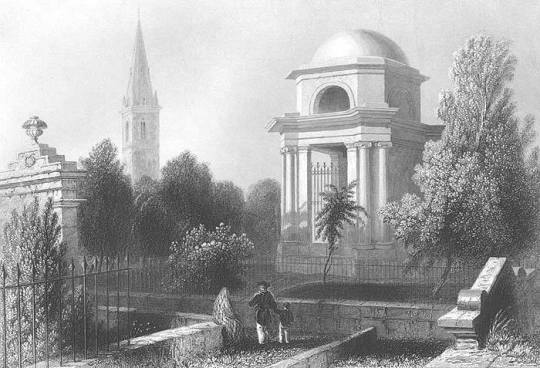

On November 29th 1813 a campaign was launched in Dumfries to raise public subscriptions to fund a mausoleum for the poet Robert Burns.
Robert Burns was originally buried in St Michael's Churchyard, Dumfries, in a simple grave, marked only by a plain stone slab. In 1803 when Dorothy and William Wordsworth visited Dumfries they had difficulty in even finding the grave. Burns' admirers came to believe that this was an insufficient memorial to the poet.
A circular was published on 29 November 1813 calling for the public to subscribe to the cost of a mausoleum. 18 local worthies attended a meeting in the George Inn in Dumfries held on 16 December 1813, and the project was launched.
Amongst those who took a leading part in the fund raising campaign was Sir Walter Scott. Money flowed in from all over people as far afield as India and America donated money. By spring 1815 enough funding was in place for the work, based on a design by Thomas Hunt of London, to be put out to tender. The contract was won by a local stonemason, John Milligan, with a tender of £331.8s.6d. The first stone was laid on 5 June 1815, in a less crowded part of the churchyard than where Burns had initially been buried.
The construction of the mausoleum ran into a number of problems caused by Milligan's failure to comply with the specifications or take directions from the committee supervising the work. It was only in September 1817 that the mausoleum was complete and the monument installed within it. The actually monument within the mausoleum was the work of Peter Turnerelli, an Irish-Italian sculptor working in London. The statue on the wall shows the Muse Coila hovering above the figure of Robert Burns who is standing by his plough.
On the 19th of September 1815, Robert Burns’s body was exhumed from his original, modest grave, and reinterred in the Mausoleum which stands in the south-eastern corner of St Michaels kirkyard, in 1834 when Jean Armour (Robert Burns's Wife) died she was buried alongside him within the Mausoleum
17 notes
·
View notes
Text
Napoleon and the Bayeux Tapestry


In 1803-1804, this tapestry was borrowed from Bayeux in Normandy for a two-month exhibition at the Musée Napoléon (Louvre).
Vivant Denon’s letter to the sub-prefect of Bayeux the following year:
“I am sending back to you the Tapestry embroidered by Queen Matilda, wife of William the Conqueror. The First Consul has seen with interest this precious monument of our history, he has applauded the care that the habitants of the city of Bayeux have brought for seven and a half centuries to its conservation. He has charged me to testify to them all his satisfaction and to entrust them with the deposit. Invite them to bring new care to the conservation of this fragile monument, which retraces one of the most memorable actions of the French Nation.”
(20 February 1804)
Napoleon attended the opening of the exhibition on 5 December 1803, with Denon and Visconti.
A press release for the exhibition was published in the ‘Beaux-Arts’ column in Le Moniteur on 29 November and in the tabloid Journal de Paris on 28 November. Visconti wrote a guide for the artwork which was partially reprinted in Le Moniteur.
The tapestry was returned to Bayeux two months later, on 18 February 1804. Many in Paris wanted to keep it in the city, but Napoleon ordered that it be returned.
Previously, the historic tapestry had been confiscated during the French Revolution. It was covering military wagons and almost cut up when a local lawyer, Léonard Lambert-Leforestier, saved it by sending it to city administrators for safekeeping.
The tapestry depicts the William the Conqueror, Duke of Normandy. The piece was made about a decade after his 1066 invasion of England and the purpose of the tapestry was to glorify the invasion.
It was displayed to the public in Bayeux in 1812 and has been publicly displayed ever since:
“From 1812 the Tapestry was kept in the Hotel de Ville (city hall) in Bayeux. It was generally hung and displayed to the public in September of every year. In addition, the custodian could show it to visitors, rolling it out gradually on a table by turning the crank handle of a winder: this way of exhibiting it was described on several occasions by British writers between 1814 and 1836. From 1842, it was put on permanent display for the first time in the Matilda gallery.”
Sources:
Susan Jaques, The Caesar of Paris: Napoleon Bonaparte, Rome, and the Artistic Obsession that Shaped an Empire
Carola Hicks, The Bayeux Tapestry: The Life Story of a Masterpiece
Bayeux Museum: From Odo’s Cathedral to the Louvre
#Bayeux Tapestry#Bayeux#Napoleon#napoleon bonaparte#napoleonic#napoleonic era#first french empire#french empire#19th century#william the conqueror#France#history#art#norman invasion#1066#Susan Jaques#Carola Hicks#The Caesar of Paris#The Caesar of Paris: Napoleon Bonaparte Rome and the Artistic Obsession that Shaped an Empire#Vivant Denon#Denon#tapestry#embroidery#tapestries#Middle Ages#medieval#medieval history#french history#louvre
12 notes
·
View notes
Text
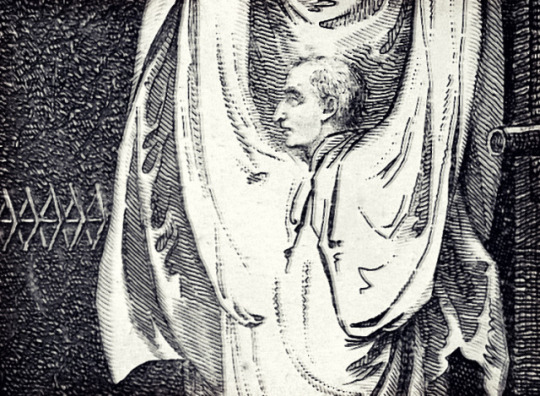
Hammersmith Ghost: The Ghastly Tale of the London Haunting that Led to Murder
Through November and December of 1803, London was seized by pure terror. The Hammersmith district had been plagued with sightings of a macabre-looking ghost. Every night, reports of a malevolent apparition flooded the police station. According to most accounts, the specter was determined to frighten anyone nearby. It was described as wearing a white shroud or calfskin and having large glassy eyes. One of the most alarming encounters concerned an elderly woman and her younger, pregnant friend. The two women were allegedly so scared upon seeing the ghost that they died of fright in their beds a few days later. Another sighting occurred and caused a wagoner to lose control of his horses. His 16 passengers were injured. Finally, a brewer named Thomas Groom claimed to be strangled from behind while strolling through a churchyard. After grappling with his assailant, Groom turned around in time to see the ghost vanish behind a row of tombstones.
Local speculation eventually traced the ghost to the restless spirit of a man who had slashed his own throat 12 months prior; as a suicide case, his soul was unable to rest peacefully, so the theory went. But skeptics in the village believed they were being victimized by a prankster, and quickly formed a vigilante group.
On December 29, members of the group, including night-watchman William Girdler, spotted a shrouded figure lurking about the area. The group gave chase; halfway into their pursuit, the figure dropped his shroud and escaped.
Four days later, everything changed.
Thomas Millwood, a 32-year-old plasterer, was returning home along Black Lion Lane on the evening of January 3, 1804. Having just come from his parents’ home, Millwood was still wearing his white work clothes: an apron, waistcoat, and trousers. One of the vigilantes named Francis Smith spotted Millwood and immediately shouted: “Damn you. Who are you and what do you want? I’ll shoot you if you don’t speak!” Without waiting for a response, Smith fired two gunshots, one of which hit Millwood in the face and killed him instantly.
Hearing the shots from her house, Anne Millwood called out her brother’s name in the street but did not get an answer. She ran into the direction of Black Lion Lane and found him sprawled across the ground, covered in blood. Once it became evident that Millwood was the victim of mistaken identity, and that Smith had fired his gun in haste, Smith surrendered to police. Millwood’s body was taken to the Black Lion Inn and examined by the local surgeon, where it was confirmed that a bullet wound to the lower left jaw and subsequent spinal damage had been the cause of death.
Two days later, a man named John Graham came forward and admitted to being the Hammersmith “ghost.” Graham stated that he had created the ruse to scare his apprentices who had been frightening his children with ghost stories. Still, his reasoning did not explain why unrelated people had been attacked. Unsure about how to deal with him, the judges granted him bail while they deliberated. No records of further legal action against Graham exist.
13 notes
·
View notes
Photo

6:29 AM EST November 15, 2024:
Ray Manzarek - "If The Whole World Was Mine" From the album Carmina Burana (1983)
Last song scrobbled from iTunes at Last.fm
SPRINGTIME Were diu werlt
In 1803 a scroll of medieval poems was discovered in the German province of Bavaria among the debris of the secularized monastery of Benedikt-Beuren ("BURANA").
These lyrics, written primarily in Latin, were determined to be the work of renegade monks and wandeing poets of the 13th century. Their words captured the lost world of rebels and dropouts of the medieval clergy, hard lovers, drinkers, on the move, celebrating existence, rather than living the meditative celibate, cloistered life of the monastery.
In 1935 German composer Carl Orff re-discovered the poems. Impressed with their meaning and rhythm he composed a cantata utilizing the centuries-old verses. He transformed the writings into invocations and profane chants accompanied by numnerous instruments and magical representations.
These songs ("CARMINA") were divided into three primary sections. Springtime -- the life force renewed; In the Tavern -- drinking and gambling; The Court of Love -- passion, sensuality. The sections are pervaded and framed by the Wheel of Fortune ("O Fortuna") perpetually turning, perpetually governing the course of man's existence.
In 1983 Ray Manzarek, long attracted to the spiritual power of Carmina Burana, chose to interpret the piece in a contemporary framework. This presentation intends to create enchanted pictures; to conjure up the ecstasy expressed by the lyrics, an enhanced intense feeling for life akin to the passions and revelry of the wandering poets of so long ago.
0 notes
Text
youtube
Netflix made an educational history show. Let's assess the clothes 👀 (ft Lilla Crawford) Save up to 40% off Brooklinen's bundles by shopping their biggest sale of the year. Click my link to shop https://bit.ly/BernadetteBrooklinen . [*If you're watching this video after 11/29, you can still get a discount by using the code BERNADETTE for $20 off your orders over $100] More Lilla! https://ift.tt/307gJai ⤠ NEVER MISS AN UPDATE ⤟ 📜 (FREE) NEWSLETTER https://ift.tt/tXm7T1M 📸 INSTAGRAM @bernadettebanner https://ift.tt/VoYF1Qa ♥️ PATREON https://ift.tt/xap4rPJ RESEARCH ASSISTANT | Heathcliff McLean IG @mxheathcliff https://ift.tt/yUS1ohi ⤠ SOURCES ⤟ [1] British painter. 1572. Portrait of Walter Devereux (1539–1576), First Earl of Essex. Oil on Wood. New York, NY. Metropolitan Museum of Art. https://ift.tt/bmw1suL. [2] Osterkamp, Peggy. 2013. “What Is Velvet and How It Is Made? (Part One).” Peggy Osterkamp’s Weaving Blog. November 2, 2013. https://ift.tt/K5hUm8v. [3] After Hans Holbein the Younger. c. 1537. Portrait of Henry VIII. Oil on Canvas. Liverpool, UK. Walker Art Gallery. https://ift.tt/ODiM0Se. [4] Pickering, Henry. 1741. Sir Wolstan Dixie (1700–1767), 4th Bt, Market Bosworth. Oil on Canvas. Nottingham, UK. Nottingham City Museums & Galleries. https://ift.tt/1SanJr5. [5] Royal Ontario Museum. 2013. “A Pair of 18th Century French Panniers Arrives at the ROM!” Royal Ontario Museum. September 13, 2013. https://ift.tt/gM3DuGN. [6] Gautier-Dagoty, Jean-Baptiste-André. 1775. Marie Antoinette, Queen of France (1755-1793). Oil on Canvas. Versailles, France. Palace of Versailles. https://ift.tt/19biAtS. [7] Unknown artist, European. c. 1770. Portrait of a Lady Holding an Orange Blossom. Oil on Canvas. Ontario, Canada. Art Gallery of Ontario. https://ift.tt/ViANtSW. [8] Unknown photographer. c. 1850. Emma Gurney (1803-1860). Photograph. Durham, UK. Darlington Centre for Local Studies. https://ift.tt/e1UKwS2. [9] Unknown photographer. c.1900. Woman with Straw Hat. Photograph. Private Collection. https://ift.tt/UMqskN5. [10] Wirth, Frederick. 1860. Two Children and Woman. Carte-de-visite Photograph. Seattle, WA. University of Washington Libraries, Special Collections. https://ift.tt/FeHCdiy. [11] Unknown illustrator. 1887. Susan B. Anthony. History of Woman Suffrage Volume 1 Edited by Elizabeth Cady Stanton, Susan B. Anthony, Matilda Joslyn Gage. https://ift.tt/7PS6k9s. [12] Purtich, Kirstin. n.d. “Thomson Cage Crinoline.” Bard Graduate Center. https://ift.tt/2FeB5rz. [13] N. Currier. 1851. The Bloomer Costume. Lithograph Print. Washington, D.C. Library of Congress. https://ift.tt/acn6Ovs. [14] Unknown artist. c. 1855. Amelia Bloomer. Chromolithograph. Encyclopædia Britannica. https://ift.tt/uVIUh7z. [15] Hilliard, Nicholas. 1598. Elizabeth I (1533–1603). Oil on Canvas. Derbyshire, UK. Hardwick Hall. https://ift.tt/xpBTVkR. [16] Unknown maker. 1603. Corset from Elizabeth I’s Wax Effigy. London, UK. Westminster Abbey. https://ift.tt/QNvG4XA. [17] Unknown maker. 1601-1800. Orthopaedic Corset to Fit Adult Male. Iron, Leather. London, UK. Wellcome Collection. https://ift.tt/KHp2WZ3. [18] Gheeraerts the Younger, Marcus. 1592. Queen Elizabeth I (“The Ditchley Portrait”). Oil on Canvas. London, UK. National Portrait Gallery. https://ift.tt/Y9fr7jV. [19] Unknown artist, English. 1588. Queen Elizabeth I. Oil on Panel. London, UK. National Portrait Gallery. https://ift.tt/oHKTCiX. [20] Unknown maker, English. 1750-1780. Woman’s Corset. Linen Twill and Baleen. Los Angeles, CA. Los Angeles County Museum of Art. https://ift.tt/9xTfnGb. [21] Unknown maker, Spanish. Late 16th Century. Verdugado. Linen, Reed. Zamora, Spain. Museo Etnográfico de Castilla y León. https://ift.tt/7shLGEQ. [22] Rabel, Daniel. 1626. The Royal Ballet of the Dowager of Bilbao’s Grand Ball. Pen and Black ink, Watercolour. Paris, France. Musée du Louvre. https://ift.tt/9udOgzV. via YouTube https://www.youtube.com/watch?v=y0yAN8PHc2M
0 notes
Text
Marbury v. Madison: Shaping the Foundations of Judicial Review and its Enduring Impact on American Governance
By Maya Mehta, Seattle University Class of 2025
November 29, 2023

The crucial Marbury v. Madison Supreme Court ruling, rendered in 1803, laid the groundwork for the judicial review doctrine and profoundly altered the nature of American governance. Chief Justice John Marshall's ruling in this case established the Court's authority to interpret the Constitution and deem acts of Congress unlawful. The tenets of Marbury v. Madison remain relevant almost two centuries later, influencing legal interpretation, the distribution of power among the organs of government, and the foundation of the US constitutional structure.
Historical Context:
It is crucial to examine the historical setting in which Marbury v. Madison originated to comprehend the case’s significance today. With the election of 1800, sometimes called the ‘Revolution of 1800’, the Democratic-Republicans gained political control over the Federalists. The Judiciary Act of 1801, which aimed to ensure Federalist dominance in the judiciary and expand the number of federal judgeships, was approved by the Federalist-controlled Congress in the final days of John Adams's administration.
In his haste to name these justices before to the inauguration of the Jefferson administration, Adams commissioned many ‘midnight judges’, among them William Marbury. After failing to get his commission, Marbury filed a writ of mandamus with the Supreme Court, directing Secretary of State James Madison to produce the document.
Establishing Judicial Review:
Supreme Court of the United States Justice Marshall upheld the Supreme Court’s jurisdiction to examine and interpret the Constitution. Despite rejecting Marbury on procedural grounds, Marshall clarified an important idea: the authority of judicial review. He said that it was the Court’s responsibility to decide whether laws were constitutional and, if not, to overturn those that did not comply with the Constitution.
With this historic declaration, the Supreme Court for the first time asserted its authority over judicial review, reshaping the check and balance mechanism among the three branches of government. The ongoing strength and stability of the American constitutional system may be attributed to Marshal’s ruling, which established the judiciary as an equal participant in interpreting and maintaining the Constitution.
Impact on Checks and Balances:
By strengthening the judiciary’s function as a check on the legislative and executive branches, Marbury v. Madison established the principle of checks and balances. The ruling gave the Court a way to protect constitutional values and stop any abuses of authority by the other arms of government. This fine balance is still very important in today’s political environment since the Court is still a major factor in deciding whether legislation and executive acts are constitutional.
The Supreme Court has used its judicial review authority to protect individual rights, maintain the separation of powers, and guarantee that government acts are faithful to the Constitution on several occasions because of this case. A range of legal and political circumstances find resonance with the concepts articulated in Marbury v. Madison, from historic civil rights decisions to discussions around presidential authority.
Legal Interpretation and Precedent:
The case of Marbury v. Madison established the legal theory of stare decisis or following precedent. The Court’s declaration of its judicial review authority served as a fulcrum for other rulings, influencing the development of American jurisprudence. Consequently, the ruling established a precedent for the Constitution as interpreted by the Court and the nullification of laws that were in violation with its provisions.
In the modern day, the Supreme Court's decision-making is still guided by the stare decisis doctrine. Because judges usually cite Marbury v. Madison as a seminal judgment when assessing the legitimacy of legislation or presidential acts, the judicial system is more stable and predictable.
Impact on Contemporary Issues:
The ideas upheld in Marbury v. Madison are still relevant in discussions and legal disputes today. The Court is often called upon to address fundamental questions like legality, the protection of individual rights, the extent of presidential power, and whether a particular statute is consistent with the Constitution.
Marbury v. Madison established a precedent that is often referenced in situations pertaining to issues of federalism, the extent of presidential directives, and striking a balance between civil liberties and national security. The case continues to be a benchmark for conversations about the boundaries of governmental power and the judiciary’s function in upholding the constitution.
Critiques and Challenges:
Although Marbury v. Madison is largely credited with creating the judiciary’s judicial review authority, there have been some who disagree with the ruling. Some contend that the ruling gave the courts excessive authority and gave elected representatives’ choices the ability to be overturned by unelected judges. The continuous conflict between democratic government and judicial review highlights how complicated and dynamic American constitutional interpretation is.
Critics often highlight the possibility of judicial activism, in which the Court interprets the Constitution in a way that supports the justices’ political or personal views, going beyond its constitutional authority. In today’s legal and political discourse, there is ongoing discussion and controversy about the right function of the judiciary within the constitutional framework.
Conclusion:
A cornerstone pillar supporting the structure of American constitutional law is Marbury v. Madison. The Supreme Court’s continued work demonstrates its lasting influence on the checks and balances, the division of powers, and the judiciary’s role in interpreting the Constitution. The ideas expressed in this historic case continue to direct and develop the American system of government, reinforcing the judiciary’s vital role in upholding the constitutional order as the country struggles with changing legal and political issues.
______________________________________________________________
Fawbush, Joseph. “Marbury v. Madison Case Summary: What You Need to Know.” Findlaw, 19 May 2020, supreme.findlaw.com/supreme-court-insights/marbury-v--madison-case-summary--what-you-need-to-know.html. Accessed 29 Nov. 2023.
“Marbury v. Madison | Background, Summary, & Significance | Britannica.” Encyclopædia Britannica, 2023, www.britannica.com/event/Marbury-v-Madison. Accessed 29 Nov. 2023.
“Marbury v. Madison (1803).” National Archives, 28 May 2021, www.archives.gov/milestone-documents/marbury-v-madison. Accessed 29 Nov. 2023.
“Marbury v. Madison, 5 U.S. 137 (1803).” Justia Law, 2023, supreme.justia.com/cases/federal/us/5/137/. Accessed 29 Nov. 2023.
“The Supreme Court . The Court and Democracy . Landmark Cases . Marbury v. Madison (1803) | PBS.” Thirteen.org, 2023, www.thirteen.org/wnet/supremecourt/democracy/landmark_marbury.html. Accessed 29 Nov. 2023.
“WILLIAM MARBURY v. JAMES MADISON, Secretary of State of the United States.” LII / Legal Information Institute, 2023, www.law.cornell.edu/supremecourt/text/5/137. Accessed 29 Nov. 2023.
0 notes
Text
Marx Christian Price
Marx Christian was born in Germany in 1833. 1852 was listed as his year of immigration from Germany. Due to the year of emigration he was most likely between 18 and 23 years old. He first settled in Brooklyn, NY.
His first marriage was on November 27, 1855 to Elizabeth Staats (born in Brooklyn, New York). Their children were: Wilhen Ludwig Price, born October 4, 1856, died November 14, 1880; George Christian Price, born January 2, 1858 in Brooklyn NY, died May 8, 1908, in Reading, Berks , PA, at age 50, buried at Woodlands Cemetery. George's occupation listed him as a "heater setter", Christian Price in entry for George Price, 1908; Heinrich Leopold Price, born March 20, 1860; Philipa Analie Price, born February 5, 1862; Elizabeth Price died on November 30, 1867.
Upon Elizabeth’s death, Marx Christian married Charlotte Catharina Geist in Philadelphia, PA, on May 5, 1868. Charlotte was born in Deutschland (Germany) on Aug. 25, 1843. Based on the year she left Germany for Philadelphia she was probably between 3-4 years old (between 1848 - 1850). Charlotte was around 20 years old when she married Marx Christian who was between 32-34 years old.
Marx Christian and Charlotte lived in Philadelphia PA: (February 13, 1900 census: Charlotte and Christian Price, 2100 Diamond Street, Ward 32, Philadelphia, Pennsylvania). Marx Christian's occupation was a merchant and tavern owner (1900 US Federal Census, Philadelphia, Pennsylvania).
Their children were: Friederich Leonhardt Price May 29, 1869; Sophia Augusta Price, born August 24, 1870 (n the 1900 Census, Sophia Price was age 30); Robert William Price, August 8, 1871; Charles Friederick Price, born March 17, 1873 in Philadelphia, PA, died June 20, 1909, in Philadelphia, Pennsylvania. Charles was 36, single, and occupation was listed as "Adv. Solicitor N.A". Burial date: June 23, 1909. Charles is buried at Woodlands Cemetery. Christian Price in entry for Charles F. Price, 1909.); buried 1908 Woodlands Cemetery, Philadelphia, PA, USA; Walter Scott Price Sr., born September 26, 1876, died March 18, age 68 in 1945; Lillian Estelle Price, born March 21, 1879 (Married name: Howser. In the 1900 Census, Lillian Price was 21); Margarette Louisa Price, born June 18, 1880, died July 1, 1880.
Charlotte died on February 13, 1910, age 66 years old, in Philadelphia, Philadelphia County, Pennsylvania, USA. She is buried in Woodlands Cemetery, I 665, Philadelphia, Philadelphia County, Pennsylvania, USA (findagrave Memorial ID 97310205). Her obituary read as Charlotte C Price (Charlotte Geist), Mother: Charlotte C; Father: Louie Geist (From the Philadelphia, Pennsylvania, Death Certificates Index, 1803-1915). Her obituary from the Philadelphia Inquirer reads: "Charlotte C. Geist Price, 66y 6m 20d, Married, Daughter of Louie and Charlotte C. Geist, 2100 Diamond Street, 32nd Ward". Philadelphia Inquirer, Feb. 15, 1910: "PRICE - On February 13, 1910, CHARLOTTE C., wife of Christian Price, aged 66 years. Relatives and friends invited to attend the funeral services, at her husband's residence, 2100 Diamond street, on Wednesday, at 2 P. M. Interment at Woodlands Cemetery. Burial: Woodlands Cemetery, Philadelphia, Philadelphia County, Pennsylvania, USA."
(Marx) Christian Price was 76 and widowed in 1910 when the 1900 US Federal Census was conducted.
Sources:
-ancestry.com: a 1900 US Federal Census in Philadelphia, Pennsylvania
-familysearch.org: United States Census, 1900, Household of Christian Price, Philadelphia city Ward 32, Philadelphia, Pennsylvania, United States.
-familysearch.org: Philadelphia City Death Certificates, 1803-1915
-The Marx Christian - Charlotte Geist Price Family Plot in Philadelphia, PA. Marx Christian's burial site was listed in the census records. The plot map and internment records were provided by Woodlands Cemetery, Philadelphia, Philadelphia County, Pennsylvania, USA.
#Marx Christian Price#Walter Scott Price#Walter Scott Price Family History#Price Mansion#Price Mansion Philippines#Charlotte Geist
0 notes
Text






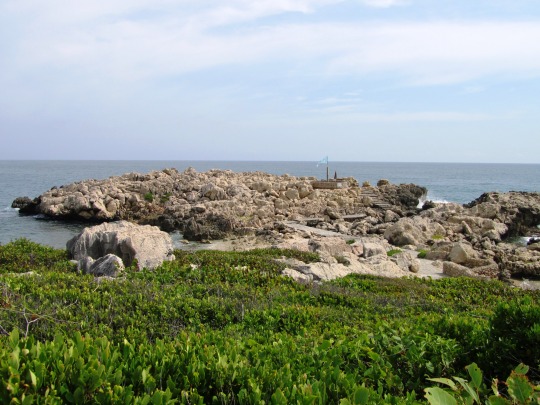





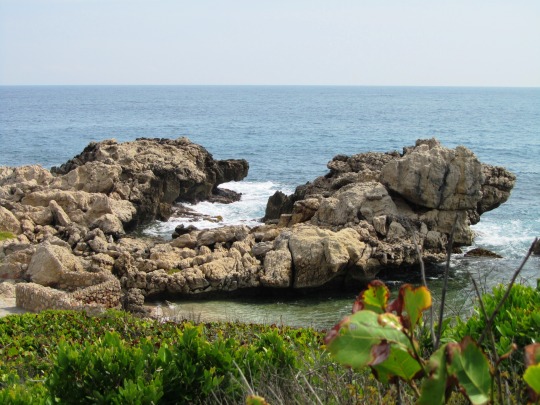







Dessalines & Christophe declare St Domingue (Haiti) independent on November 29, 1803.
#St Domingue#Haiti#independent#Hispaniola#Haitian history#29 November 1803#220th anniversary#Caribbean Sea#Caribbean Island#beach#forest#nature#Labadee#water#waves#landscape#beach life#Dragon's Head#summer 2013#travel#original photography#vacation#tourist attraction#landmark#seascape#countryside
1 note
·
View note
Photo

Sand Creek Massacre
The Sand Creek Massacre (29 November 1864) was a slaughter of citizens of the Arapaho and Cheyenne nations at the hands of the Third Colorado Cavalry of US Volunteers under the command of Colonel John Chivington, resulting in casualties estimated at over 150 in the Native American encampment, which was in compliance with the policies of US officials.
Black Kettle (l. c. 1803-1868), chief of the Southern Cheyenne, had consistently sought peace with the White settlers since signing the Fort Laramie Treaty of 1851. He rejected the call to war of others – including Chief Tall Bull of the Dog Soldiers and Roman Nose (Cheyenne Warrior) – and continued to trust in the assurances of the representatives of the US government that the Cheyenne would be left in peace. These representatives were under the impression that Black Kettle spoke for all the Cheyenne in signing the Fort Laramie Treaty of 1851 or the Treaty of Fort Wise in 1861, but he had no control over other chiefs like Tall Bull (l. 1830-1869) or Roman Nose (l. c. 1830-1868), who continued to resist the encroachment of Euro-Americans on their lands.
Hostilities escalated in June 1864 with the Hungate Massacre, in which the killing of a White family was attributed to Cheyenne warriors. John Evans (l. 1814-1897), then governor of Colorado, sent word to the Native communities that any who were friendly toward the United States should seek safety near Fort Lyon, and all others would be considered hostiles. Black Kettle – along with other chiefs including White Antelope (l. c. 1789-1864), Little Wolf (l. c. 1820-1904), and Chief Niwot (Left Hand) of the Southern Arapaho (l. c. 1825-1864) accepted the invitation and moved their people to Big Sandy Creek, about 40 miles (65 km) northwest of Fort Lyon.
On the morning of 29 November 1864, Colonel John Chivington (l. 1821-1894) led the Third Colorado Cavalry in a surprise attack on the encampment – even though Black Kettle, as instructed, was flying the American flag and the white flag above his lodge – slaughtering over 150 innocent people, mostly young children, women, and the elderly. Afterwards, Chivington claimed this engagement was a great military victory against an armed alliance of Cheyenne and Arapaho until reports of survivors – like the Cheyenne-Anglo interpreter George Bent (l. c. 1843-1918) – and soldiers like Captain Silas Soule (l. 1838-1865) – contradicted him.
The ensuing investigation established the conflict as a massacre of innocents with only a small armed force of Cheyenne and Arapaho warriors in the camp killed defending themselves and their families. Still, the event was designated a "battle" by the press of the time and is often still referred to as such in the present day. In 2007, the area of the massacre was declared a National Historic Site, and, in 2014, Colorado Governor John Hickenlooper gave an apology to the descendants of those murdered at Sand Creek; but the policies that made that massacre possible have never been acknowledged, and the US government has never offered a similar apology.
Background
The California Gold Rush of 1848 sent scores of miners and their families through the lands of the Arapaho, Cheyenne, Sioux, and others, disrupting their lives, scattering – and killing – the buffalo (the primary food source of the Plains Indians), and destroying the prairie with their wagons and cattle. Clashes between the Natives and settlers led to the Fort Laramie Treaty of 1851, establishing territories for Native American nations in the region which, according to this treaty, the United States had no claim to.
Black Kettle, and other chiefs, signed the treaty trusting in the word of the US delegates that they would not be bothered any further. The treaty was never honored by the White settlers or their government, however, and was completely discarded in 1858 during the Pike's Peak Gold Rush. When the Natives again fought to defend their lands, another treaty was offered – the Treaty of Fort Wise of 1861 – which the US government and its citizens paid no more attention to than the one they had presented to the people of the Plains in 1851. The Dog Soldiers – one of the military societies of the Cheyenne – responded to the invasion with armed resistance under their leader Tall Bull while Roman Nose led his own band in defense of Cheyenne lands in what came to be known as the Colorado War (1864-1865).
Fort Laramie Treaty 1868
U.S. National Archives and Records Administration (Public Domain)
Although Black Kettle – and other 'peace chiefs' – rejected the course taken by Tall Bull and Roman Nose, they could do nothing to stop them. The Cheyenne had a representational government, the Council of Forty-Four, which made decisions for the whole nation, but the chief of each band was free to accept or reject their conclusions. The council had nothing to say regarding declarations of war which were the responsibility of individual chiefs of military societies. Black Kettle's signature on a treaty did not in any way bind Tall Bull to recognize it.
Continue reading...
34 notes
·
View notes
Text
Who is the worst? Round 1: Henry Clay vs Gouverneur Morris

Henry Clay Sr. (April 12, 1777 – June 29, 1852) was an American attorney and statesman who represented Kentucky in both the U.S. Senate and House of Representatives. He was the seventh House speaker as well as the ninth secretary of state. He unsuccessfully ran for president in the 1824, 1832, and 1844 elections. He helped found both the National Republican Party and the Whig Party. For his role in defusing sectional crises, he earned the appellation of the "Great Compromiser" and was part of the "Great Triumvirate" of Congressmen, alongside fellow Whig Daniel Webster and John C. Calhoun.
[Clay and his family] initially lived in Lexington, but in 1804 they began building a plantation outside of Lexington known as Ashland. The Ashland estate eventually encompassed over 500 acres (200 ha), with numerous outbuildings such as a smokehouse, a greenhouse, and several barns. Enslaved there were 122 during Clay’s lifetime with about 50 needed for farming and the household.
In early 1819, a dispute erupted over the proposed statehood of Missouri after New York Congressman James Tallmadge introduced a legislative amendment that would provide for the gradual emancipation of Missouri's slaves. Though Clay had previously called for gradual emancipation in Kentucky, he sided with the Southerners in voting down Tallmadge's amendment. Clay instead supported Senator Jesse B. Thomas's compromise proposal in which Missouri would be admitted as a slave state, Maine would be admitted as a free state, and slavery would be forbidden in the territories north of 36° 30' parallel. Clay helped assemble a coalition that passed the Missouri Compromise, as Thomas's proposal became known. Further controversy ensued when Missouri's constitution banned free blacks from entering the state, but Clay was able to engineer another compromise that allowed Missouri to join as a state in August 1821.
Gouverneur Morris (January 31, 1752 – November 6, 1816) was an American statesman, a Founding Father of the United States, and a signatory to the Articles of Confederation and the United States Constitution. He wrote the Preamble to the United States Constitution and has been called the "Penman of the Constitution". While most Americans still thought of themselves as citizens of their respective states, Morris advanced the idea of being a citizen of a single union of states. He was also one of the most outspoken opponents of slavery among those who were present at the Constitutional Convention. He represented New York in the United States Senate from 1800 to 1803.
After the ratification of the Constitution, Morris served as Minister Plenipotentiary to France. He criticized the French Revolution and the execution of Marie Antoinette.
It is said by some that Morris was "an aristocrat to the core," who believed that "there never was, nor ever will be a civilized Society without an Aristocracy." It is also alleged that he thought that common people were incapable of self-government because he feared that the poor would sell their votes to the rich and that voting should be restricted to property owners. Duff Cooper wrote of Morris that although he "had warmly espoused the cause of the colonists in the American War of Independence, he retained a cynically aristocratic view of life and a profound contempt for democratic theories."
#worst founding father#founding fathers bracket#founding fathers#amrev#brackets#henry clay#gouverneur morris
12 notes
·
View notes
Photo
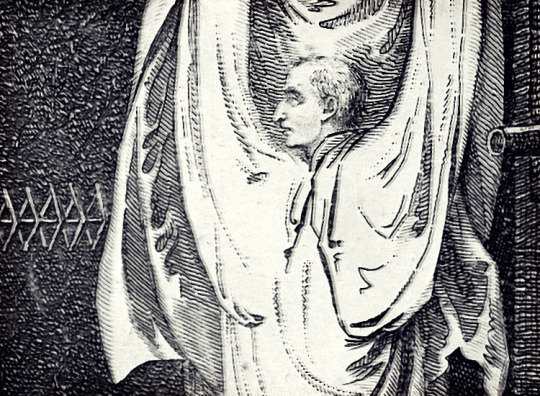
Hammersmith Ghost: The Ghastly Tale of the London Haunting that Led to Murder
Through November and December of 1803, London was seized by pure terror. The Hammersmith district had been plagued with sightings of a macabre-looking ghost. Every night, reports of a malevolent apparition flooded the police station. According to most accounts, the specter was determined to frighten anyone nearby. It was described as wearing a white shroud or calfskin and having large glassy eyes. One of the most alarming encounters concerned an elderly woman and her younger, pregnant friend. The two women were allegedly so scared upon seeing the ghost that they died of fright in their beds a few days later. Another sighting occurred and caused a wagoner to lose control of his horses. His 16 passengers were injured. Finally, a brewer named Thomas Groom claimed to be strangled from behind while strolling through a churchyard. After grappling with his assailant, Groom turned around in time to see the ghost vanish behind a row of tombstones.
Local speculation eventually traced the ghost to the restless spirit of a man who had slashed his own throat 12 months prior; as a suicide case, his soul was unable to rest peacefully, so the theory went. But skeptics in the village believed they were being victimized by a prankster, and quickly formed a vigilante group.
On December 29, members of the group, including night-watchman William Girdler, spotted a shrouded figure lurking about the area. The group gave chase; halfway into their pursuit, the figure dropped his shroud and escaped.
Four days later, everything changed.
Thomas Millwood, a 32-year-old plasterer, was returning home along Black Lion Lane on the evening of January 3, 1804. Having just come from his parents’ home, Millwood was still wearing his white work clothes: an apron, waistcoat, and trousers. One of the vigilantes named Francis Smith spotted Millwood and immediately shouted: “Damn you. Who are you and what do you want? I’ll shoot you if you don’t speak!” Without waiting for a response, Smith fired two gunshots, one of which hit Millwood in the face and killed him instantly.
Hearing the shots from her house, Anne Millwood called out her brother’s name in the street but did not get an answer. She ran into the direction of Black Lion Lane and found him sprawled across the ground, covered in blood. Once it became evident that Millwood was the victim of mistaken identity, and that Smith had fired his gun in haste, Smith surrendered to police. Millwood’s body was taken to the Black Lion Inn and examined by the local surgeon, where it was confirmed that a bullet wound to the lower left jaw and subsequent spinal damage had been the cause of death.
Two days later, a man named John Graham came forward and admitted to being the Hammersmith “ghost.” Graham stated that he had created the ruse to scare his apprentices who had been frightening his children with ghost stories. Still, his reasoning did not explain why unrelated people had been attacked. Unsure about how to deal with him, the judges granted him bail while they deliberated. No records of further legal action against Graham exist.
12 notes
·
View notes
Photo





On September 19th 1817 the remains of Robert Burns are moved to the Robert Burns Mausoleum in Dumfries.
Burns was originally buried in St Michael’s Churchyard, Dumfries, in a simple grave, marked only by a plain stone slab. In 1803 when Dorothy and William Wordsworth visited Dumfries they had difficulty in even finding the grave. Burns’ admirers came to believe that this was an insufficient memorial to the poet.
A circular was published on 29 November 1813 calling for the public to subscribe to the cost of a mausoleum. 18 local worthies attended a meeting in the George Inn in Dumfries held on 16 December 1813, and the project was launched.
Amongst those who took a leading part in the fund raising campaign was Sir Walter Scott.
Money flowed in from all over people as far afield as India and America donated money. By spring 1815 enough funding was in place for the work, based on a design by Thomas Hunt of London, to be put out to tender. The contract was won by a local stonemason, John Milligan, with a tender of £331.8s.6d. The first stone was laid on 5 June 1815, in a less crowded part of the churchyard than where Burns had initially been buried.
The construction of the mausoleum ran into a number of problems caused by Milligan’s failure to comply with the specifications or take directions from the committee supervising the work. It was only in September 1817 that the mausoleum was complete and the monument installed within it. The actual monument within the mausoleum was the work of Peter Turnerelli, an Irish-Italian sculptor working in London. The statue on the wall shows the Muse Coila hovering above the figure of Robert Burns who is standing by his plough.
And so on this day 1815, Robert Burns’s body was exhumed from his original, modest grave, and re-interred in the Mausoleum which stands in the south-eastern corner of St Michaels kirkyard, in 1834 when Jean Armour (Robert Burns’s Wife) died she was buried alongside him within the Mausoleum.
Burns Mausoleum became a place of pilgrimage for visitors to Dumfries, part of what has become, The Burns Trail, or The Burns Heritage Trail.
As you can see by the first depiction, at the time The Mausoleum had a spot all by itself in the cemetery, but these places are an ever growing growth industry and over the years it has become a wee bit surrounded by others resting places.
Robert Burns has over sixty known memorials (statues, busts, fountains and buildings) all over the world, the only non religious person with more is Queen Victoria.
9 notes
·
View notes